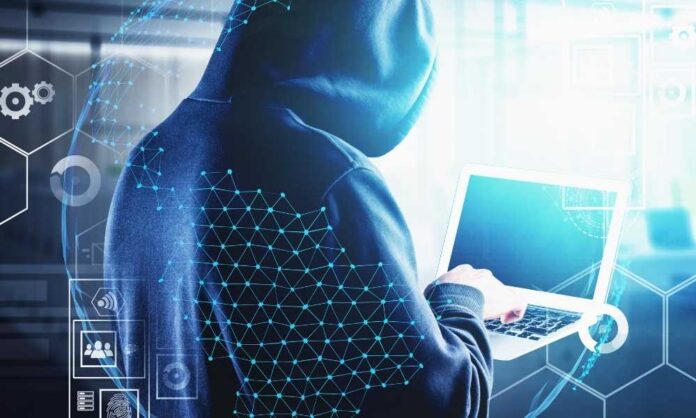Banking Cybersecurity Trends: While the rise of cybercrime in 2020-2021 has been widely documented, did you know how much of the challenge is directed at the financial sector? Over the last 12 months, 80% of financial companies have registered an uptick in cyberattacks, a stunning 13% increase from 2019. The increase was 238% between February and April. One thing is sure: this is a wake-up call for banks.
Five key factors that have led to the increase in cybercrime are described below. What are the attack trends to look out for in 2021, and how can the banking sector develop its intelligence to cope with the increased risk?
The Biggest Banking Cybersecurity Trends
1. Increased Fraud and Identity Theft
One of the main contributors to the rise in banking-related cybercrime this year was a 60% spike in fraud. According to the most recent Financial Crime Survey, card cloning is the most significant issue, with a 34% rise in 2020 alone.
Attackers can steal physical card data even more efficiently with linked devices thanks to advanced cyberattacks. Point-of-sale systems or credit card readers are new attack vectors that can provide access to stolen EMV data. This is then used to steal financial data or money from consumers, but it will be successful only when banks refuse to check the CVV. Unfortunately, studies have revealed that this security flaw could affect more than one-third of banks.
It’s also worth noting that, after COVID-19, the cost of each fraudulent transaction has risen. The value of each attempted fraud attempt was 5.5% higher in 2019 than the previous year’s results. Banks must understand that attackers are becoming more brazen in their tactics, believing that they can operate under the radar of bank employees unaware of their illegal activities.
2, The Change to Online Spending and Communications at a Breakneck Pace
As a result of the pandemic, more people are shopping online than ever before, and banking workers must review transactions through a different lens. “Recent estimates show that over 80% of credit cards actually in people’s wallets have already been compromised,” says Markus Bergthaler, Director of the Merchant Risk Council. Employees need in-depth training to spot the difference between what appeared odd last year and a lock-down impulse buy this year.
A rise in activity from High-risk Merchant Category code industries is another noteworthy development. Transportation, telecommunications, file sharing, and the cloud are the sectors with the most significant risk of fraud and disputes. When you consider the rise in communications and transactions in these areas by 2020, it’s easy to see why cybercrime has risen as well. Bank workers will benefit from specialized preparation and help address the increased risk of the rapid rise in traffic to these industries, from consumers getting refunds on canceled holidays to companies accelerating cloud roadmaps overnight.
3. Increased Complexity in Banking Infrastructure
In 2019, more than 70% of financial firms were exposed to a cyberattack, a higher number than in any previous year. A quick look at what today’s banks are up against shows the following:
Outdated legacy systems: Maintaining legacy infrastructure comes at a high cost and comes with many risks, but most banks can’t get away from it. Critical data and software are often stored in legacy systems, forcing bank workers to deal with inefficient and outdated processes daily.
Hybrid deployments: As banks strive to modernize and adopt digital transformation, cloud deployments, including cloud-native and serverless infrastructure, are becoming more popular. Since Legacy cannot be eliminated, banks are left with a hybrid reality that is difficult to imagine and secure.
Attackers use supply chains and partner relationships to gain footholds into financial networks, from pooled cloud storage to physical relationships with FinTechs that may use financial and regulatory infrastructure.
Attackers thrive on sophistication when preparing a campaign against any company, recognizing that the more complicated a network security is, the more minor visibility security teams and bank employees would have.
4. Securing remote jobs in the post-COVID world – Banking Cybersecurity Trends
The operational difficulties that banks will face in 2021 cannot be overstated. KPMG forecasts that the banking industry will be permanently altered, with offshore service center closures necessitating increased outsourcing and, in many cases, long-term work from home. “Investing in the right support and preparation for workers in a difficult period would be key,” the financial behemoth says.
Working from home poses several challenges, including protecting BYOD policies, the realities of vulnerable home networks shared by numerous family members, and outdated or improperly equipped devices, ranging from laptops and PCs to routers extenders and routers. Some problems concern more than just HQ staff. In the United States alone, teller transactions are projected to decrease by 40% in 2020, with more than 20,000 bank closures expected.
Banks must concentrate their efforts on incident management tactics and team member education playbooks for at-home situations, or they risk exposing flaws that go unnoticed until it is too late.
5. Digital Banking Transitions – Banking Cybersecurity Trends
Of course, it’s not just workers who are making the transition to interactive. This shift coincides with changes in customer behavior. Bank branches were closing at a rate of three per day long before the pandemic, as millennials forced this conventional industry into the digital age. In reality, 27% of millennials have never visited a traditional bank.
Securing the growth of digital banking necessitates a thorough understanding of a broad range of security and privacy issues, including:
- Digital identify theft and fraud.
- Sophisticated phishing scams
- Malware and ransomware
- Credential leaks
- Privilege escalation
- Compliance regulations
Both of these threats, as well as others, can only be managed through banking security awareness.
It’s no surprise that 87% of banking executives say their cybersecurity problems increased last year. Banks and financial institutions will need more than a single technology to counter this fear effectively. They need to have an engaging, ongoing security awareness program that is always updated with their employees.

